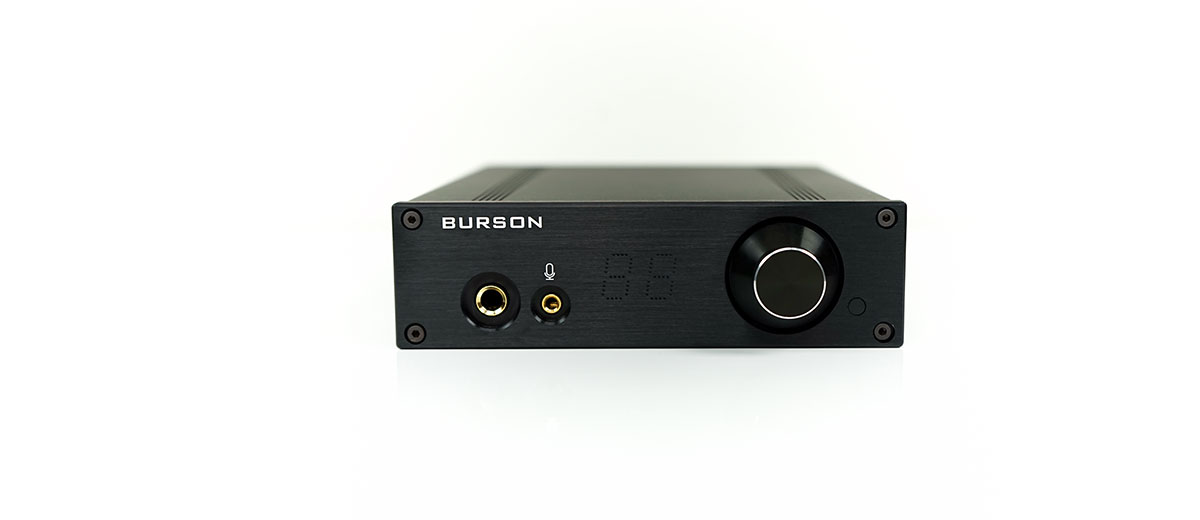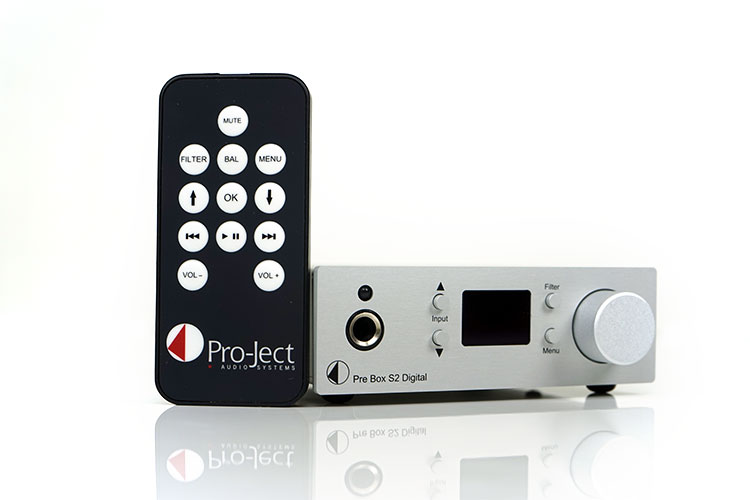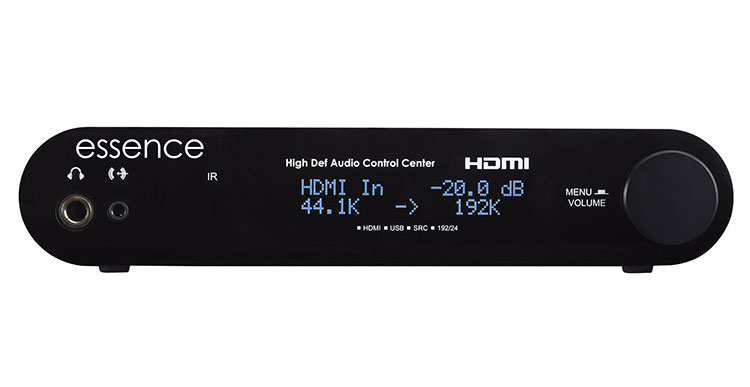Sound Impressions
Vivid Tonality & Presentation
Vivid is a good name for this presentation actually because this opamp configuration is more aggressive and musically ‘fun’ tone than the Classic opamp mix. This is the opamp mix I think gamers will generally go for.
This is not to say this setup is not for music lovers, far from it. The enhanced low-end and livelier lower treble delivery will be music to EDM and rock lover’s ears. If you want something punchy, clean, and clear then the Vivid mix is perfect.
Mids are a little more on the neutral side both in positioning and timbre compared to the Classic mix. Any warmth is pulled from the elevated low-end rather than a fattening of the lower mids.
Instrumental separation and clarity are excellent without a hint of the dreaded Sabre glare and top-end harshness, especially in upper mids and lower treble percussion timbre. You will find it energetic but rarely peaky or brittle sounding. Proof positive a good implementation can make a mockery of our obsession with how a DAC chipset could or should sound based purely on a name.
Staging is also a little more open sounding with more depth and height emphasis. Compared to the Classic it is not as intimate and more suited to large-scale recordings such as EDM.
Again, for gamers, the immersive staging quality of the Play Vivid setting might be more suited to online gaming requirements where imaging and positioning can often be on quite a grand scale.
Classic Tonality & Presentation
For those who wish for something a little more balanced and perhaps a little smoother or more relaxed then the Classic tonality is the better choice. The low-end on the Classic setting is reigned in compared to the Vivid’s punchier and more aggressive presentation.
It is still quite full-sounding with some good body in its own right. There is also a nice hue of warmth from the mid-bass that I tend to prefer for pairing with headphones such as the Sundara and oBravo’s Ra. these pairings tend to require a more studied matching process to prevent either from sounding too thin and bright and pair better with the Classic mix than the Vivid settings.
Mids on the Classic are also a little more forward and slightly richer sounding with a more intimate staging quality, particularly on vocals which are a little further forward and richer sounding. Treble on the Classic is also a little smoother.
With this setting, the Play moves the treble back a touch, particularly the lower treble and percussion performance I think it sounds all the better for it if you are a music lover. The presentation is a little more laid back, perhaps not as airy, but more natural-sounding to my ears.
Basic Tonality & Presentation
The entry-level version of the Play, known as the Basic, has a more traditional Sabre sound with a slight treble emphasis on an otherwise neutral and clean-sounding presentation.
The TI opamps inside are very good in terms of delivering a neutral timbre and conveying a nice level of detail also. I also particularly like the imaging and sense of space in the mids with the Basic presentation. I have no issues with the level of resolution the Basic is capable of delivering with the most moderate headgear and IEMs.
Tonally, the Basic is not as smooth sounding as the Classic though, and lacks its enticing texture and richness. The TI opamps really do not offer the same refined and natural tone as the Classic opamps and to be honest that should not surprise anyone given the price difference between these 3 units.
Instead, you get a peppy treble response that is slightly thinner sounding than the Classic and a generally cooler sound throughout compared to the Vivid and the Classic setups.
Synergy
Efficiency
Version 1 (Now discontinued)
The original Play was akin to driving a muscle car. In short, this was not an amp for any IEM bar the most demanding types such as Obravo’s Ra and the RHA CL1. The power rating at 1W into 32Ω combined with the fairly aggressive gain made the Play V1 a nightmare for IEM noise floors. You simply got too much hiss and very little volume control.
Added to that is the 8Ω output impedance rating of the headphone jack which means crossover-designed efficient IEMs will get a low-z skew and sound different to what you would normally expect. IEMs such as the Andromeda sound super messy and noisy and not worth considering.
Version 2
Hurrah! Now we have a standard Play design that is so much quieter with IEMs and delivers a tiny bit more room to play with volume than the older V1 design. With the volume at zero, I detected next to no discernable noise with the likes of the JH Audio Layla 20Ω and a much lower noise floor than before using the Andromeda.
However, the 8Ω output impedance rating is unchanged so whilst something like the Layla is enjoyably quiet with a superb black background, the tonal skew meant it lost a lot of its bass impact and delivered a fairly lean and bright signature.
Here I suggest investing in an iFi Audio IEMatch cable for an additional $50. Not only does it correct the impedance skew on low impedance gear such as the Layla it will also purge any last remaining issues with noise.
It will also provide a more workable level of volume on the Play due to its natural levels of attenuation built-in. If you have the older version 1 you can invest in this also but the results are better with the new design of the Play which already has much lower levels of noise.
Power
The V2 will bring in an additional level of flexibility for IEM users that previously was not available on the older design. However, the Play’s primary focus is throwing out plenty of power for medium to inefficient headphones, both dynamic and planar varieties.
They do a great job of scaling up some challenging headphones such as the Sundara, LCD-2c, and have no issues at all driving 250Ω dynamic driver variants such as the Beyer DT1770.
Those with slightly more sensitive headphones such as the Campfire Audio Cascade or the AKG K872 will find the gain levels limiting. The level of control has slightly improved though with the V2 of the Play.
Previously these two headphones would top out at around 9-10 on the V1. On the V2 I can get about 4-5 steps more on the volume levels so the gain feels a little less aggressive without a loss of power which is a welcome improvement.
At this point, I would still strongly suggest that if you are jacking directly out of the Play and using PC-controlled media software then do some pre-amp work from the software side to allow the Play more wiggle room for micro-volume adjustments. Medium efficiency headphones will tap out loudness-wise very quickly without it and even harder to drive headphones such as the LCD-2c will welcome that additional leeway.
Our testing without it has the Sundara at a max of 30-35 out of a possible 99 digital volume steps, the LCD-2c at 25-30 steps, the DT1770 at 15-20 steps right down to the Cascade, and the AKG K872 on 10-15 digital steps.
Pre-Amping
The Play is an excellent DAC/Pre-amp component. Despite its aging DAC chipset, the implementation is very good to the point where I have used it quite a lot to power higher-end analog amps such as the Formula S from Xi Audio and the Violectric V281.
Here is where those additional digital volume steps come in really handy. For pre-amping, I regularly find the Play at its best using around 50% volume or about 60 steps with the rest of the fine-tuning coming from the amps I have connected to the Play.
The voltage rating from the analog output is around 2V or maybe just a smidgen higher so your higher-end analog amp will not lose out on any dynamic range as a result.
For gamers, the dual RCA and pre-amp will work very nicely indeed with active speakers. Using my own Celsus SP One mid-fi bookshelf speakers there was tons of headroom and dynamic range coming from the Play on pre-amp and DAC duties.
Mic Capability
Antlion Audio ModMic 5
$69.95
Partners
We picked this mic since we are going to give it its own full review in the coming months as well as the fact the company has partnered with Burson on mic referencing using both it and the Play. These two companies are no strangers in the night when it comes to working with each other.
Modular
The Modmic 5 is a modular mic system with both active noise-canceling and studio recording modes using a dual-mic design. Its modular design means you can attach it to almost any headphone and still retain a relatively clean form factor.
Accessories
It comes with 1m and 2m cables, a mute module, some base clamps to attach to the headphone, and a nifty cable wrap to keep both headphone and mic cable neatly arranged. The kit is finished with a svelte carry case, looks very professional, and sells for just under $70.
Performance
Apart from my grips with the 3M sticker solution, the Modmic 5 sonic performance with the Play was excellent. Not being a gamer though our focus was primarily on end-to-end comms such as FB Video, Skype, and other video solutions.
Background noise was very low, voices sounded accurate rather than muffled or tinny, and delay or lag seemed quite minimal. Certainly, much lower noise than jacked into a PC itself which tended to produce a bit more static than the Play.
The delay was tested with a face-to-face scenario in a single room using FB video and a 25MB pipe for reference purposes. Active in-line muting on the Modmic 5 was pretty much instant using their module switch.
A definite step up from BT mics, in-line remotes but not quite as clean and pure sounding as my AT250 USB Cardioid Condenser mic with a pop filter which set me back around $150.
Select Comparisons
Pro-Ject Audio Pre Box S2 Digital
$399
Technical
The S2D is also a small-scale DAC/Amp with pre-amping capability. However, unlike the Play is it more geared to pure audiophile duties and for those who enjoy streaming via their PC. Like the Play, it has a dual RCA analog capability with USB digital input and a quarter jack single-ended output for headphones.
Unlike the Play, it has additional coaxial and optical inputs and though it has a switching DC power supply it can operate purely on a 5V USB input from a computer. It cannot slot into a PC nor does it have mic input controls.
Power and decoding is a big differentiator between the two units. The Burson Play is much more powerful at 1W into 32Ω compared to the S2D very humble 68mW. That is a chasm of difference in power.
However, the Play is not as suitable for efficient IEM and headphones under 20Ω with its high output impedance rating. Certainly, the newer Play design is much quieter with IEMs now but the impedance skew is still there. It is much more suited to demanding headphones.
Decoding-wise both will handle up to DSD256 though the S2D’s more modern ES90382QM will go further to DSD512 and PCM 32BIT/768kHz via USB. The S2D will also fully unfold MQA making it more of a streaming tool compared to the Play’s gaming and power pitch.
Performance
For headphones the Play has more headroom for a wider range of headphones and its noise floor is very low for headphones such as the Hifiman Edition X v2, LCD-2, HD600, and the HD650. There are zero problems driving these and they do exhibit a greater level of dynamic range than the S2D is capable of. Given the difference in power between these two units that should not be a surprise.
Tonally, they are very similar though the S2D lacks a little body compared to the Play once you start pushing it. Put it in a more comfortable driving territory and once again, the treble performance is a touch smoother with slightly less glare on the S2D compared to the Play Basic.
However, the Play has the slightly better transient response, instrumental separation, and superior holographic staging using the Vivid mix. With the Classic mix, I get a more balanced sound and a little closer to the S2D’s linear performance. The key difference is in the mids with a more forward and warmer signature and an elevated vocal presence.
Essence HDACC
$499
Technical
The HDACC at a glance does pretty much what the Play does but their pitch is quite different. The HDACC gears itself more to the home entertainment and music audiophile with its HDMI Bluray processing capability whereas the Play’s power, PC integration, and microphone functions take it more into gaming territory.
Both do have Sabre DAC chipsets though I would consider the ES9012 of the HDACC more limited than the ES9018K2M of the Play. The HDACC does not natively decode DSD either, instead, it will churn out a maximum of 24/192 via PCM compared to the native decoding up to DSD256 and 32BIT/386KHz of the Play.
Where the HDACC does have an edge is the ability to take an HDMI signal and process Dolby TrueHD and DTS-HD Master Audio which sounds magnificent on the right setup.
Performance
Amping and power on the Play are substantially more evolved than the HDACC’s own amp output. The headphone amp on the HDACC is ok but it does have that more traditional clean sound despite avoiding the Sabre glare in its treble signature.
The Play’s much beefier output rating combined with its excellent discreet Class-A design and opamp swapping capability makes it much more flexible tonally and much more powerful for headphones.
With the Vivid setting, the Play is an altogether more aggressive signature. It does share some traits with the HDACC such as a clean and clear treble, however, the low-end on the HDACC is much more neutral sounding.
With the Classic opamps, the Play sounds a little richer than the Play with a more forward midrange, a smoother treble, and a bit more mid-bass elevation and fullness to its low-end performance. With the TI infused Play Basic setup I find the gap to be much closer in terms of presentation as both have a fairly neutral sound and deliver a peppier treble response.
Both resolve very well actually in terms of detail but once you throw in the additional power and a demanding headphone the Play retains its dynamic range better than the HDACC. that is not to say the HDACC doesn’t sound good with the likes of an Ether or LCD-2c, it is just that additional power of the Play and its Class A design does have a competitive edge to it.
Our Verdict
The Burson Play is a very solid exposition on the ability not only to make a monkey out of those obsessed with DAC sound signatures but that powerful amps should normally be rather expensive. The opamp rolling is nothing new, but Burson opamps, combined with that Class A discreet design are truly excellent for the price points.
Having worked through the entry-level Basic opamp setup, Classic and Vivid I do have a distinct preference for the smooth and refined Classic opamp mix. The Basic is a good entry-level classic Sabre sound but if you want to hear the Play perform optimally I suggest at the very least the Vivid mix.
Why stop there though? Go opamp hunting above and beyond and see what works well for you.
As an audiophile, the Play should definitely be considered as a power amp for those on a slightly tighter budget. The LCD-2C combined with the Play for under $1k is a solid deal though my preference for the Classic opamps tips it all slightly over $1k.
For gamers, sorry, I am not a gamer, but the integration into a PC tower, active speaker pre-amp capability, and a solid mic performance all point to a potentially solid upgrade on your generic PCI soundcard and then some.
The overall feeling I got was that of a solid, powerful, and fun-sounding tank of an amp that won’t break the bank for headphone users and gamers alike.
Burson Play Specifications
Click here to visit the Burson Website for the full list of technical specifications.





